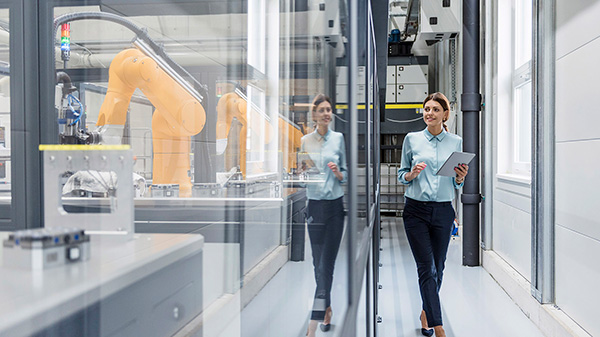The forgotten workforce: Empowering technology for 2.9 billion deskless workers worldwide that never stopped going to work during COVID-19.

By: Marcus Mossberger, Global Solutions and Industry Market Strategy, Infor
It does not seem possible that 80% of the world’s workforce (2.7 billion people) could be largely neglected by the big tech companies, but it’s true. These are the individuals behind the scenes, working on production lines, delivering goods, servicing customers, and treating patients. The pandemic proved this population was essential to the economy, and yet technology is predominantly developed for people who spend their time tethered to a desk. It is time that technology work for all the people who support society.
When corporate America was forced to adapt to hybrid and remote arrangements, organizations quickly embraced a variety of applications, including video technologies like Microsoft Teams and Zoom. Many were surprised by how effectively the white-collar workforce conformed to this new communication paradigm, but the blue collar (and no collar) workforce was left to fend for themselves. The reality is that only 1% of business software spending focuses on deskless technologies. In other words, most of the working population is being completely overlooked.
The impact of this exclusion is evident in studies that reveal only 56% of the deskless workers in the United States feel connected and engaged with their employers. Is it any wonder that this population’s dissatisfaction leads to high turnover and constant churn? In Microsoft’s Work Trend Index, a whopping 40% of people in 31 countries indicated they are considering leaving their employer this year. There is a growing sense of inevitability that traditional ways of working are giving way to new norms that will require digital empowerment.
There are three main ways that organizations can begin to address the needs of their deskless workforce:
Winston Churchill famously uttered these words decades ago, but they are just as relevant today as they were then. At this moment, the customary corporate world is “unfrozen” and will likely be malleable for the foreseeable future. Organizations that recognize the needs of their deskless workforce are investing in new digital tools and centralizing HR resources to make it easier for their deskless employees to get the support they need to be successful. Empowering, enabling and engaging the deskless workforce will be critical as companies and governments adapt to the new world of work.

Marcus Mossberger leads the Global Industry and Solution Market Strategy team at Infor, a global leader in business cloud software specialized by industry. He believes that we should genuinely enjoy our experiences at work, and has spent his career focused on the role of technology in this pursuit. He has served in a variety of disciplines including HR leadership, product management, sales, marketing and strategy. His genuine enthusiasm has fueled thought-leadership contributions about the future of work in a variety of publications and events. Marcus holds a master’s degree in Human Resources from Ottawa University and a bachelor’s degree in Psychology from the University of Kansas.
In this episode, I sat down with Beejan Giga, Director | Partner and Caleb Emerson, Senior Results Manager at Carpedia International. We discussed the insights behind their recent Industry Today article, “Thinking Three Moves Ahead” and together we explored how manufacturers can plan more strategically, align with their suppliers, and build the operational discipline needed to support intentional, sustainable growth. It was a conversation packed with practical perspectives on navigating a fast-changing industry landscape.